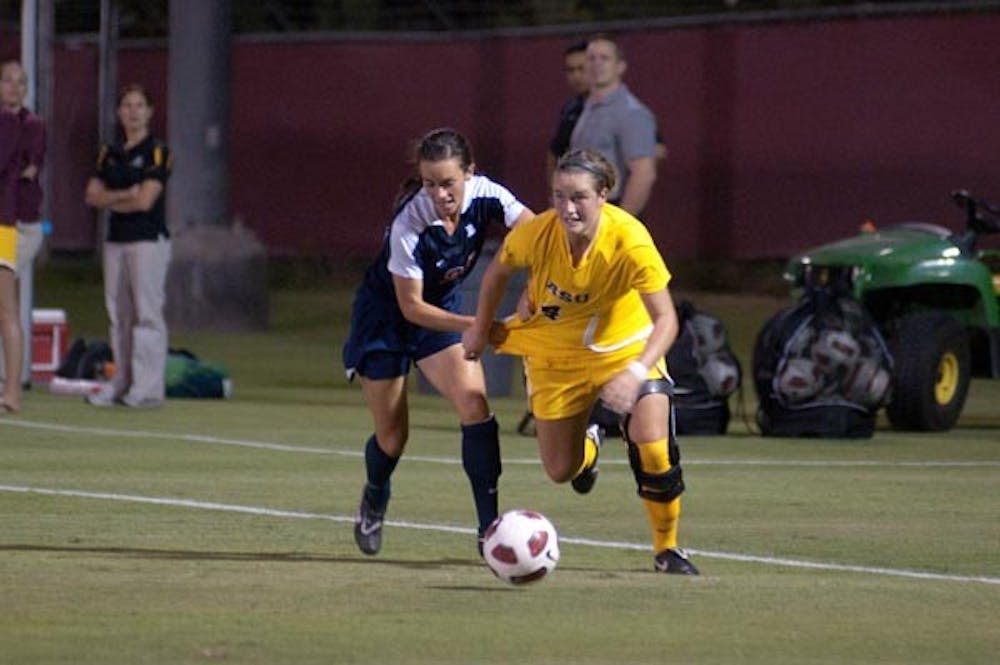Do bears pee when they hibernate? Who would win in a fight: a jellyfish or a sea anemone?
When biology textbooks fail to produce answers, one ASU website has proven to be a dependable backup.
Charles Kazilek, director of technology and integration for the School of Life Sciences at ASU, developed the website “Ask A Biologist.”
The purpose of the website is to answer student-submitted questions related to the field, and it generates more than 1 million page hits each year.
Kazilek said he wanted to provide a more reliable source for students than a traditional website or textbook.
“Ask A Biologist” was recognized in the Oct. 12 online edition of the Public Library of Science, a well-known, peer-reviewed scientific journal.
The website was created as a single page in 1997, Kazilek said, and has since grown to include more than 2,500 pages of content aimed mainly at K-12 students.
The biologists, including Kazilek and more than 150 student and faculty volunteers, can also answer the more complex questions of older individuals, Kazilek said.
Some of the volunteers, based all around Arizona and the world, are working to translate the website into multiple languages, including French.
The interactive design of the site is what has made it so successful, Kazilek said.
“The question and answer format is what drives it,” Kazilek said. He added that the interactivity of the site makes it both fun and interesting for users - a feature, he said, that is at the core of all successful websites.
“There isn’t a book on the shelf with all the answers for biology,” Kazilek said.
Going straight to the source gives a more straightforward answer compared to other sites, where information can conflict, he said.
“We want to make the site as accessible as possible,” said third-year biology doctoral student Kirsten Traynor. Traynor works as the teaching assistant for the website, where she both answers questions and forwards questions to other volunteers.
The quizzes, games and ease of navigation makes the site fun and interesting, Traynor said. She added that the site appeals to the sight and sound senses — techniques that many successful websites practice.
The site’s “bird finder” is an example of an interactive feature of the site, Traynor said.
When students see a bird they cannot identify, they can describe certain attributes of a bird they have seen and where they saw it, and the bird finder gives a list of possible species for the bird.
“It’s like going to a museum — online,” said Retha Hill, director of the New Media Innovation Lab at the Downtown campus.
Hill was impressed by the interactivity of the site and how it offered audio, polls, eye-catching photographs and other fun activities for students.
“Most websites are one-way streets,” Hill said. She added that interactivity makes users want to return to a site because it sticks in their minds.
For prospective Web developers, it is important to both understand the motivation behind a potential site and also to pay attention to what audiences want from websites, she said.
The first thing all Web developers should do is research, Hill said.
“Find what people want,” she said. “Be specific, but not so specific that you can’t be flexible.”
Kazilek believes it is vital to maintain a link with the public and continuously develop content based on their needs.
“Find your niche and keep it simple,” Kazilek said.
Ultimately, it comes down to having a passion for the work, he said.
“Think about what you love in a website,” he said. “If this wasn’t fun, we wouldn’t be doing it.”
“Ask A Biologist” can be found online at http://askabiologist.asu.edu/
Reach the reporter at alex.ferri@asu.edu
Want to get the latest ASU news in your inbox every day? Sign up for our new e-mail newsletter.





